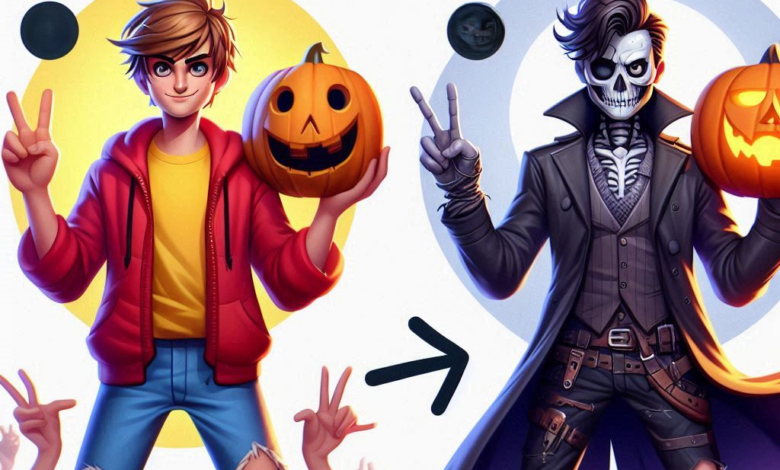Realistic vs. Stylized Character Design: Which Works Best for Your Game?

Video game development has many aspects which makes character design one of the most important ones. It is critical in making players feel connected to the characters, placing them in the game world, and ensuring the game is marketed well in the competitive gaming market. Game developers are faced with a heavy responsibility when dealing with 3D character designers: Should they choose a character design which appears more realistic, or a stylized approach? The decision whether to go with the realistic or the stylised way is a major one and it depends on such factors as the game’s purpose, the artistic direction, the target audience, and the technical considerations. Both have their strengths and the preference of the winner one is determining the success or failure of the game.
Realistic character design prefers lifelike visuals, usually modeling the real human’s anatomy, textures, and small details. This mode is mostly used in the making of triple-A games such as The Last of Us, Cyberpunk 2077, and Red Dead Redemption 2, where the purpose is to create an immersive and cinematic experience. Indeed, tech innovators today use such technologies as motion capture and photorealistic rendering to give life to these characters. Every facial wrinkle, pore, and strand of hair is carefully created to fool people into thinking that they are part of the world.
See also: Essential IT Support Functions: Keeping Your Technology Running Smoothly
The biggest benefit of realistic character design is emotional engagement. Players identify more easily with characters who seem real and move like them. The approach is most effective when it comes to story-based video games which target emotional depth. Realism in lip syncing, eye movement, and gesture conduct adds a feeling of naturalness to the sequences and in-game interactions and watching a movie. Gamers can easily sympathize with a character thrown into tumultuous situations or they can also feel more attached to NPCs when the depiction of their emotions is persuasive.
Reality, however, is difficult to achieve and it will need a lot of resources. Realistic characters require the developers to use powerful hardware, which greatly increased the costs of the production and development time involved. The video game design companies that prefer realistic characters in their games must employ artists that know how to do this, the technology of rendering them, and have large motion capture sessions. Besides, other often uncertainties are tied to the uncanny valley—a situation when characters are real but not totally, that makes them look rather than attractive but creepy. The failure to create a real feeling of a game through the approach of realism could be more of a discomfort that the immersion of the game.
On the other hand, stylized character design turned to be a trend by them siding with exaggeration, abstraction, and artistic freedom. These games like The Legend of Zelda: Breath of the Wild, Overwatch, Hollow Knight are having characters that are stylized, unrealistic but they are yet answering well to the market. The absence of realism in the process of 3D character design thus makes it possible for the designers to work on the story which makes each similar character recognizable and unique not only in the virtual world but in real life too. They are not locked into the world of real textures and proportions but instead they can spin off.
Stylized characters mostly resist the constant change of technology that is why they are long-lasted. Realistic visuals tend to outdate very fast due to the fast-paced technology advancements, while on the other hand stylized games do not lose their appeal for a long time. The visual quality of games, the one harboring exaggerated designs, vibrant colors, and the flavor of modern art expressed traditionally, wears off gradually over time. For example, games like Okami or Wind Waker still impress when it comes to aesthetics even though they were released on outdated platforms. Timelessness of the visuals is the key attraction point of the developers of games to them who want their games to be relevant for a long time.
Greater stylistic license is the first argument in favour of a redesigned character. It is a tool for designers to stress the distinct personality traits and to make characters visually robust. Round and tubby clubs, big-eyed faces with distorted expressions, and unique silhouettes are the big hits in branding and memorability. Monotony and repetition are not an option. In videogames based on reality only, designers have to follow the rules of movement and human anatomy, so stylized characters that feel rather obtuse and fanciful can twist and jump, thus creating an impression as a more dynamic and vibrant game.
Besides that, the stylized characters are more light-greedy than realistic ones on the grounds of technology, too. Virtual film actors can be models of high polygon counts, complex shaders, and heavy lighting calculations, which the machine has to work hard on. The tech-inspired creations are an exciting mix of simple textures, animations completed in no time while the image still remains superb (they are still visually appealing). This makes them a perfect choice for indie developers, mobile games, and for projects with limited budgets, as they reduce the creating process while keeping the image quality at a high level. 3d design companies andAnimation studios that concentrate on 3D design and create stylized artwork can generate captivating structures without the requirement that they include pseudo-photorealistic representations of the items. As a result, the time required for production is reduced.
So, it would be inaccurate to say this is the limit. The fact that no restrictive rules are set for the morphing or texturing process, the artists must keep characters within the boundaries of art direction. Failing to maintain the homogeneity of drawings can have an audiovisual impression of disconnection between the quests of the players and the world. While the dogma of realism is arriving at a point where a particular purpose has to be done, styling has to rely on the artist’s knowledge and creativity to be successful. If executed without due care, the characters may appear to be very common, be very exhausted by them, or be very far from what is expected in the game.
When game developers try to choose the look of the character to create, they should also think about the company’s target audience. With realistic games, a lot of gamers are delving deep into storylines that make them feel as if they are in a parallel universe, but with stylized games, these are the people who are fond of bright, different and/or fantasy settings. Below is an example of a scary game, where the more realistic the game is, the more it makes you feel scared and tense. In contrast, a light-hearted fantasy world is more fun with stylized characters, as they enhance the emotions of exploration and escapism.
The platform of the game is another significant point. Powerful consoles such as the PlayStation and Xbox, as well as high-quality personal computers, can accommodate the design of realistic characters with intricate textures and animations, but on mobile, stylized characters are better due to hardware restrictions. Participants involved in the games’ market who are aiming to release cross-platform games are often more inclined to the cartoon characters, which are compatible with different devices, yet they still maintain a visually superior quality. The more the game is available, the more game’s participants will be there.
The effectiveness of the game as an advertising tool is also one of the key factors in the decision-making process. Stylized characters are identified by their shapes and are usually easier to brand. Just think how fast most people recognize Mario, Sonic, and Pikachu—these characters have been constructed to make them the best they can be, not only in animation but also in their visual character. Realistic characters on the other hand, although more emotionally appealing, are more difficult to copyright as they are often reproductions of genuine people or standard human forms. The significance of a game’s strong stylization illustrated as a brand identity not only expands the game into the merchandise industry but also draws animation and other media into this ecosystem.
On the whole, the realistic and stylized designs can both project their designs in gaming, and not one stands as the ideal to the other. The optimal choice varies owing to different factors like game art direction, programming capabilities, and target audience expectations. Developers even opt for a combination of both types, bringing together the realism of the first approach and the stylization of the second one. Titles such as Final Fantasy VII Remake and Genshin Impact feature photo-realistic textures and animations yet still, retain the stylized look by introducing distinguishing visual elements that keep them apart from each other.
However, the approach of the character design will always remain the primary goal, at the end of the day, the game\’s identity will be reflected through the character design. Even in the most speculated aspects of a game, character design is still the focal point of unison behind the game world. For example, when working with 3D Character designers, it is important that they are experienced so as to make sure that the character\’s appearance does not differ from the intended style and thus, creates the impression of a live-like thing out there.
Looking at it that way, one realizes that in the digital world where games are always a step ahead one can easily express both things, the world can be hyper-real and colored. Having in mind the rapid evolution of the gaming field and the simultaneous tech growth and art variations, the developers will keep creating the new character designs which will certainly leave a strong impression on the players. The contrast between realism and stylization lacks the potential distinction of choosing the better one and results in characters not of mere appearance but of the real existence as individuals in the story.




